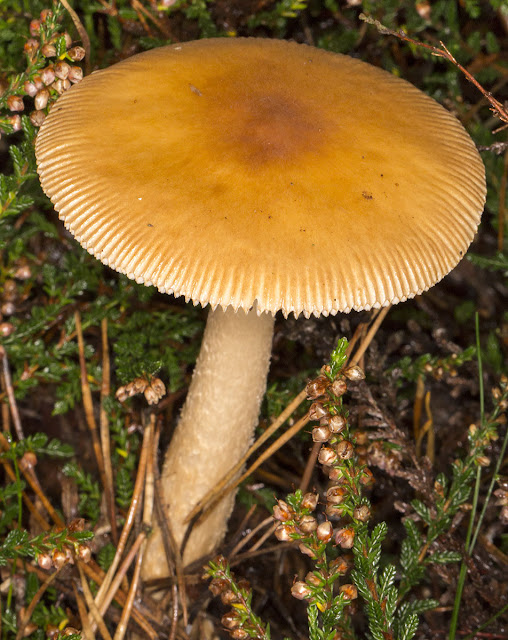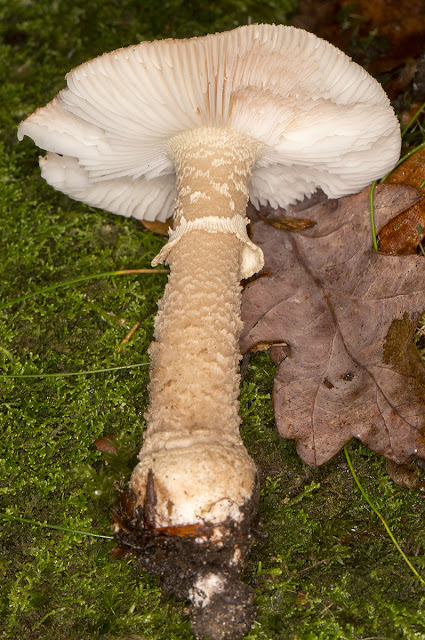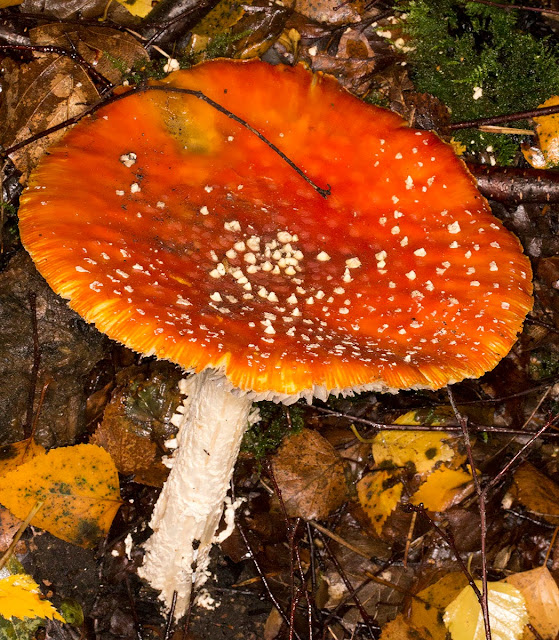 |
| Amanita fulva, Tawny Grisette. Keston Common, 19 October 2013. |
With names like Deathcap and Destroying Angel, Amanitas are not things you want to find on your plate. They include the most poisonous and dangerous fungi in Britain. They also include some of the prettiest. And they also include Caesar's Mushroom, one of the tastiest edible mushrooms; the ones that the emperor Claudius loved. It was, it is said, easy to add in some of the poisonous species that killed him.
This one above, the Tawny Grisette, is also said to be edible.
 |
| Amanita rubescens var. annulosulphurea. Keston Common, 19 October 2013. |
This is a yellowish variety of a fungus called the Blusher, because of its reaction to damage. It is said to be edible when cooked - but the water it is cooked in should be discarded. In that respect it
may be similar to this famous fungus:
 |
| Fly Agaric, Amanita muscaria. Keston Common, 15 October 2013 |
- The Fly Agaric. Some say that if this is boiled for a while and the water discarded, it becomes edible. But that relies on several chancy factors and I would not recommend it. My book says it should be treated as deadly poisonous; this is probably an exaggeration, but even so, I do not think it would be good for you.
 |
| Amanita phalloides, Death Cap. Keston Common , 19 October 2013. |
This one, even less so. This is definitely a killer, and this one specimen might be enough to do it. The greenish cap, that disintegrating ring, and the bag-like volva at the base are the things to look for. Even experienced mushroom foragers tend to leave well alone anything with a cap of that colour, just in case.




No comments:
Post a Comment